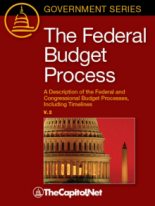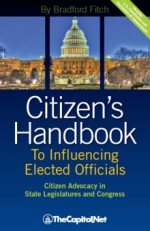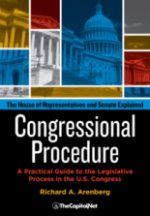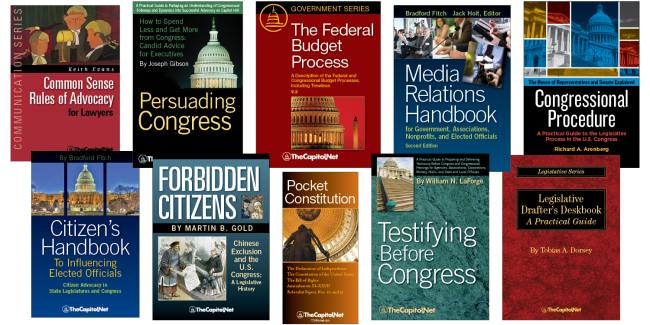From the Congressional Glossary – Including Legislative and Budget Terms
Supreme Court Appointment and Nomination
The procedure for appointing a Supreme Court Justice is provided for by the Constitution in only a few words. The “Appointments Clause” (Article II, Section 2, clause 2) states that the President “shall nominate, and by and with the Advise and Consent of the Senate, shall appoint…Judges of the supreme Court.”
The process of appointing Justices has undergone changes over two centuries, but its most basic feature–the sharing of power between the President and Senate–has remained unchanged. To receive lifetime appointment to the Court, a candidate must first be nominated by the President and then confirmed by the Senate. Although not mentioned in the Constitution, an important role is played midway in the process (after the President selects, but before the Senate considers) by the Senate Judiciary Committee. Since the end of the Civil War, almost every Supreme Court nomination received by the Senate has first been referred to and considered by the Judiciary Committee before being acted on by the Senate as a whole.
How do US Supreme Court justices get appointed? – Peter Paccone
More
- “Supreme Court Appointment Process: Consideration by the Senate Judiciary Committee,” CRS Report R44236 (31-page PDF
 )
) - “Supreme Court Appointment Process: President’s Selection of a Nominee,” CRS Report R44235 (33-page PDF
 )
) - “Confirmation of U.S. Circuit and District Court Nominations During Presidential Election Years: Frequently Asked Questions,” CRS Report R46533 (31-page PDF
 )
) - “Judicial Nomination Statistics and Analysis: U.S. Circuit and District Courts, 1977-2022,” CRS Report R45622 (56-page PDF
 )
) - “Supreme Court Nominations, 1789 to 2020 Actions by the Senate, the Judiciary Committee, and the President,” CRS Report RL33225 (58-page PDF
 )
) - “Supreme Court Appointment Process: Senate Debate and Confirmation Vote,” CRS Report R44234 (32-page PDF
 )
) - Nomination / Confirmation (CongressionalGlossary.com)
- The President’s Nominations to Federal Courts (CongressionalGlossary.com)
- The Constitution of the United States, Article. II. Section. 2. Civilian Power over Military, Cabinet, Pardon Power, Appointments
- Filibuster, Cloture, Presidential Nominations, Article II Section 2 – CRS Reports
Books
- Supreme Court Nominations
- Chapter 8.B. Nominations in Congressional Procedure
- “Supreme Disorder: Judicial Nominations and the Politics of America’s Highest Court,” by Ilya Shapiro
Courses
- Congressional Operations Briefing – Capitol Hill Workshop
- Drafting Federal Legislation and Amendments
- Writing for Government and Business: Critical Thinking and Writing
- Custom Training
- Congressional Operations Poster, with Federal Budget Process Flowchart
- Federal Budgeting, a Five-Course series on CD
- Congress, the Legislative Process, and the Fundamentals of Lawmaking Series, a Nine-Course series on CD
Publications

The Federal Budget Process 2E |

Pocket Constitution |

Citizen’s Handbook to Influencing Elected Officials: A Guide for Citizen Lobbyists and Grassroots Advocates |

Congressional Procedure |
CongressionalGlossary.com, from TheCapitol.Net
For more than 40 years, TheCapitol.Net and its predecessor, Congressional Quarterly Executive Conferences, have been teaching professionals from government, military, business, and NGOs about the dynamics and operations of the legislative and executive branches and how to work with them.
Our custom on-site and online training, publications, and audio courses include congressional operations, legislative and budget process, communication and advocacy, media and public relations, testifying before Congress, research skills, legislative drafting, critical thinking and writing, and more.
TheCapitol.Net is on the GSA Schedule, MAS, for custom on-site and online training. GSA Contract GS02F0192X
TheCapitol.Net is now owned by the Sunwater Institute.
Teaching how Washington and Congress work ™

